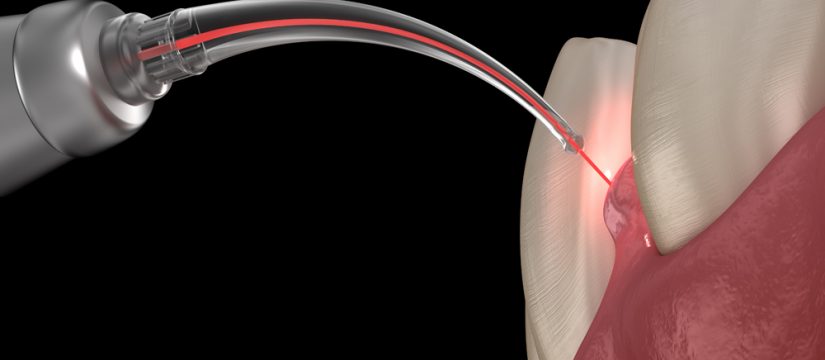
Our bodies contain connective tissue that help to keep bones, muscles and joints aligned. Similarly, there is important connective tissue in the mouth called frena, which helps to keep soft tissue aligned with the jaw.
The mouth contains three types of frena:
- The maxillary labial frenum is a band of tissue that connects the upper lip to the area just above the upper two front teeth
- The mandibular labial frenum connects the lower lip to the area just below the lower two front teeth.
- The lingual frenum connects the tongue to the floor of the mouth.
In some cases, prominent frena can adversely affect one’s smile, or may become inflamed and cause pain. In such cases, the dentists at Clínica Dental Champsaur may recommend a procedure called a dental frenectomy to minimize symptoms and/or correct cosmetic issues.
What is a Frenectomy?
A Frenectomy is a procedure where an irregular fraenum (pronounced free-num) is removed to help preserve oral health. The fraenum is the tissue that connects the gum to the lip.A frenectomy is recommended for everyone with an abnormal or misplaced frenulum, including children.
During the Dental frenectomy in Panama, the patient will receive local anesthesia, after which the frenal attachment will be removed or repositioned to reduce tension and restriction on other tissue. Dissolvable stitches may be placed to promote healing. The stiches may take several days to a couple of weeks to dissolve. Frenectomy procedures can be performed on young people, kids and even babies.
A frenectomy procedure is a simple surgery usually performed in an oral surgeon’s office. It takes less than 15 minutes to perform and recovery takes approximately 2 weeks.
Reasons for Dental frenectomy in Panama
The size and relative elasticity or mobility of frena vary from one patient to the next. In some cases, one or more of the frena may be oversized, causing painful inflammation of the gums or lead to gaps in the front teeth. Once the fena has been removed, orthodontic braces or invisible aligner trays can be used to close the gaps.
In other cases, frena can be too short or tight, restrict movement and cause pain. If this occurs in the maxillary labial frenum or mandibular labial frenum, tension on the connective tissue could draw gum tissue away from teeth, exposing roots, pull the lip, or even lead to painful tearing. A restricted lingual frenum can create a speech impediment or cause difficulty chewing.
What issues can an irregular fraenum cause?
An abnormal frenum can cause:
- Breastfeeding problems (poor latching and insufficient sucking)
- Decay and poor oral hygiene
- Speech issues such as lisping
- Difficulties in brushing and flossing
- Cosmetic issues (gaps in between front teeth)
Lingual Frenectomy
A lingual frenectomy involves removing the tissue that connects the bottom of the tongue to the floor of the mouth. Lingual frenectomies are commonly used to correct a condition called ankyloglossia.The tongue tie is generally related to a short and thick frenulum, which limits the ability of the tongue to move, sometimes preventing the correct phonation of words
Maxillary Frenectomy
A maxillary frenectomy involves removing the piece of tissue connecting the upper gums to the front teeth – commonly referred to as a lip-tie. Everyone has this tissue, but most issues arise when the tissue is excessively large or tight in infants. Newborns who cannot flare or curl out their lips have problems latching onto the breast while breastfeeding.
Over-inserted braces can also lead to abnormal tooth spacing, gum problems such as gingivitis, periodontitis, or gingival retractions.
Do you need a Dental frenectomy in Panama? Contact us for more information.
